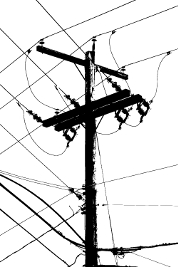EUAA denies Vic. needs
 Industrial energy users have criticised Victoria’s big power plans.
Industrial energy users have criticised Victoria’s big power plans.
Victoria's VNI West electricity transmission project, a $3.3 billion investment to bring clean energy supply to consumers, has been deemed uneconomical, and criticised for its lack of transparency.
According to the Energy Users’ Association of Australia (EUAA), the project is being built at “any cost” rather than “least cost”, and the lack of transparency means that Victorian electricity consumers “have a high chance of being asked to pay for an uneconomic project”.
The EUAA, whose members include Brickworks and Orica, has criticised the Victorian government's stakeholder engagement process, which it says undermines confidence in the modelling to test net benefits and risks, and could escalate civil disobedience along the proposed route.
In a submission to the Australian Energy Market Operator (AEMO), the EUAA said it sees no possibility of a report to the Victorian government ever showing a negative net benefit project, even though it considers it a reasonable probability.
The criticism from the EUAA comes as Victoria University's energy policy think tank brands the project “a monumental mistake” that will double or treble transmission charges for consumers.
The think tank also declared that the state's goals for renewable energy could largely be satisfied using existing transmission from the Latrobe Valley.
The Australian Energy Market Operator has classified VNI West, involving a 500-kilovolt overhead cable between NSW and Victoria, as a priority project to help underpin the transition to low-carbon energy in the National Electricity Market.
TransGrid, which will build and own it, describes it as “essential”.
Renewable energy developers have also underscored the importance of new transmission in Victoria's north-west to allow electricity from a region that is rich in solar and wind resources to flow to consumers efficiently.
However, EUAA chief executive Andrew Richards said renewables developers do not have to pay for the project, while consumers would do so from the outset, with any benefits to flow to them only years later if ever.
“Consumers start paying for it from day one, but they don't start to see any net benefits for many, many years down the path and potentially decades,” he said.
The project, which AEMO recommends is now combined with the planned Western Renewables Link line west of Melbourne, has brought local landholders and residents out on to the street amid consternation at the impact on agriculture, environment and the rural landscape.
The EUAA said both VNI West and the Western Renewables Link had been delayed by landowner opposition, partly due to a lack of adequate consultation.
It said that since the latest preferred option was released for consultation, there had been a similar lack of adequate consultation with impacted communities.
“Unfortunately, we would not be surprised if one of the consequences of AEMO/TransGrid's approach to engagement and the NEVA order is a continuation and possible escalation of the civil disobedience that has occurred recently along the proposed routes of WRL and VNI West,” the group said.
As coal-fired power stations close, VNI West could be key to bringing clean, cheap, and reliable energy supply to consumers by unlocking electricity from existing and future renewable energy zones in NSW and Victoria, according to TransGrid.
However, the EUAA has urged the Victorian government to reconsider the project's viability and ensure transparency in the decision-making process.







 Print
Print